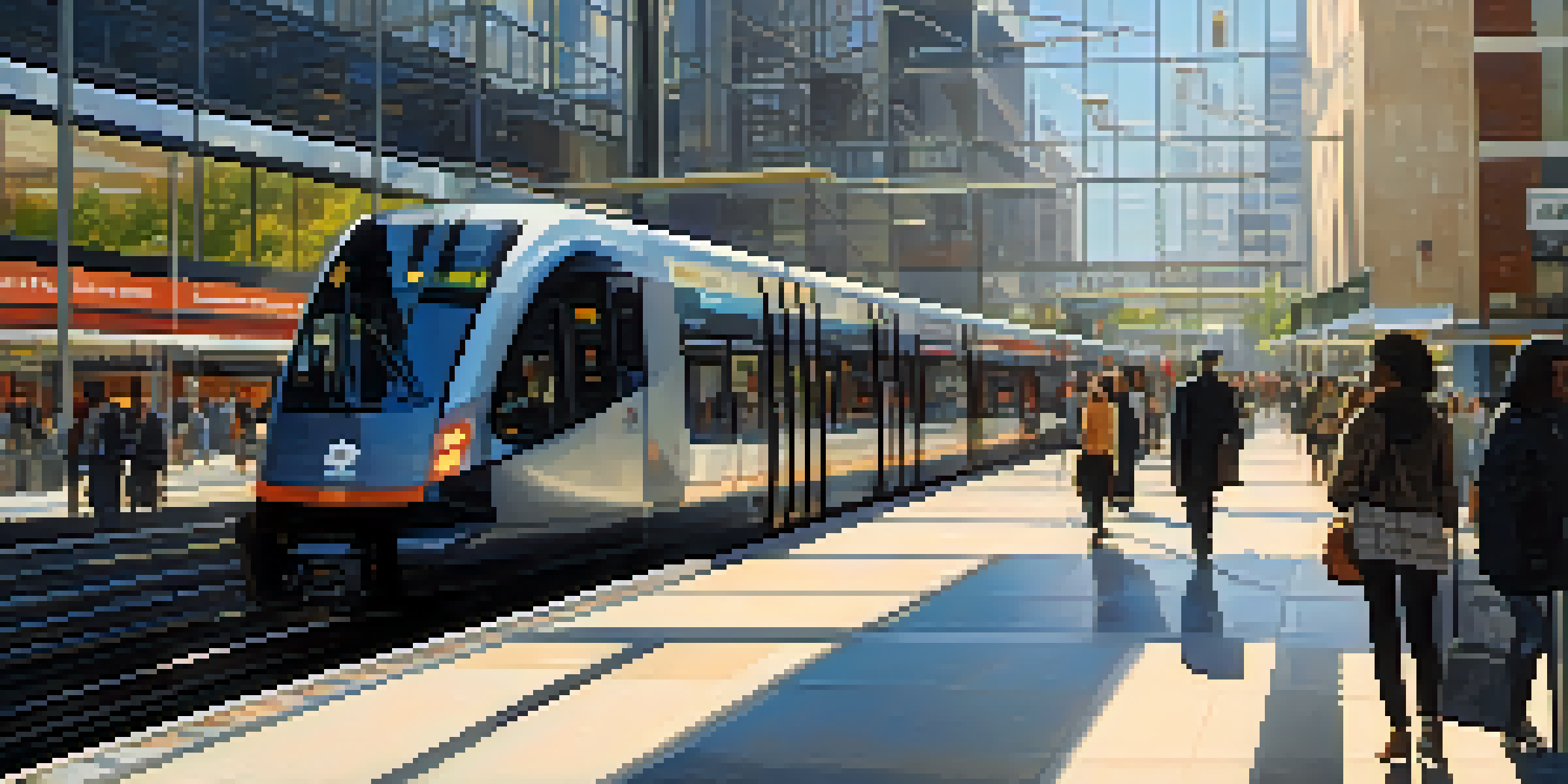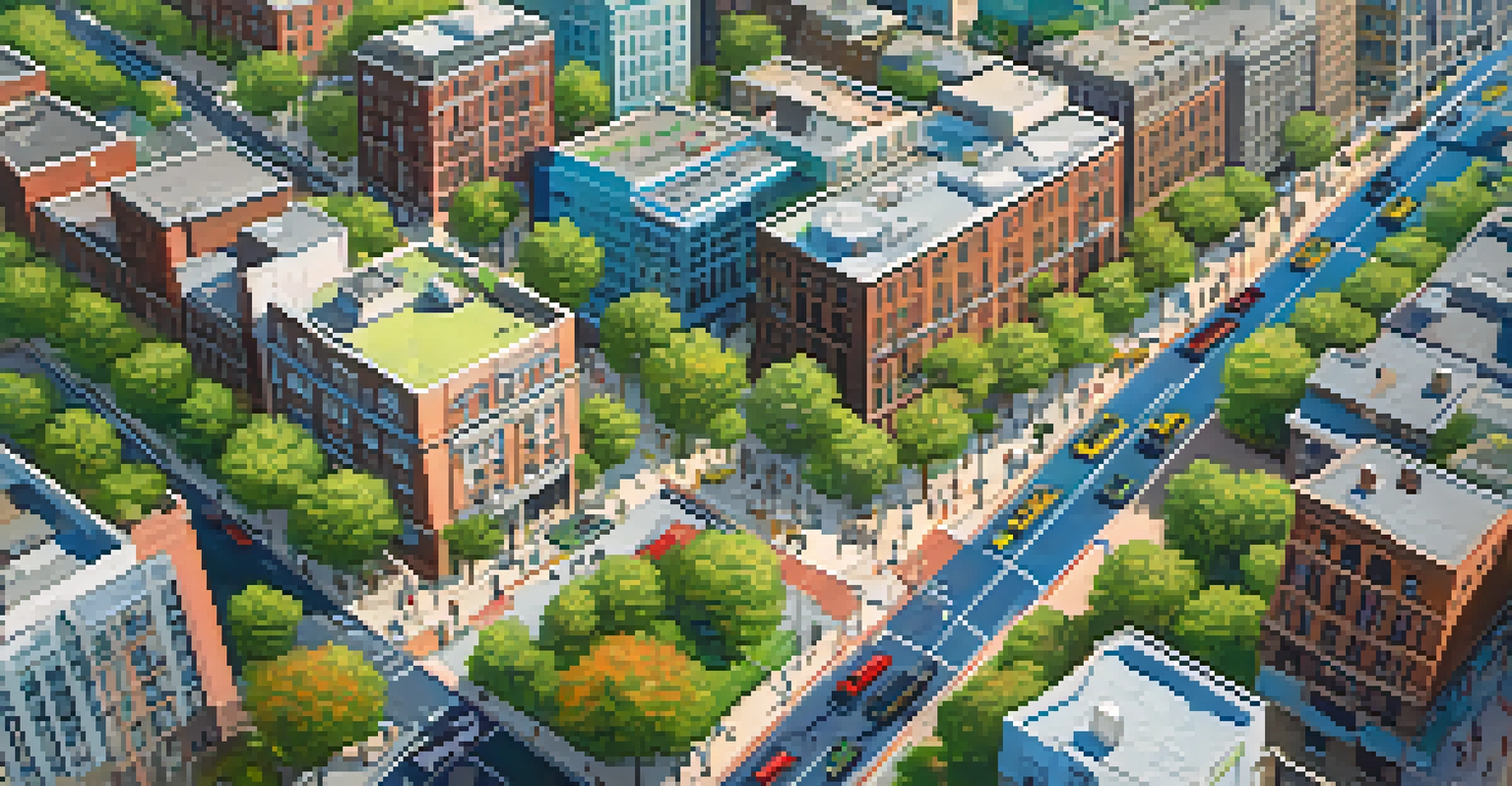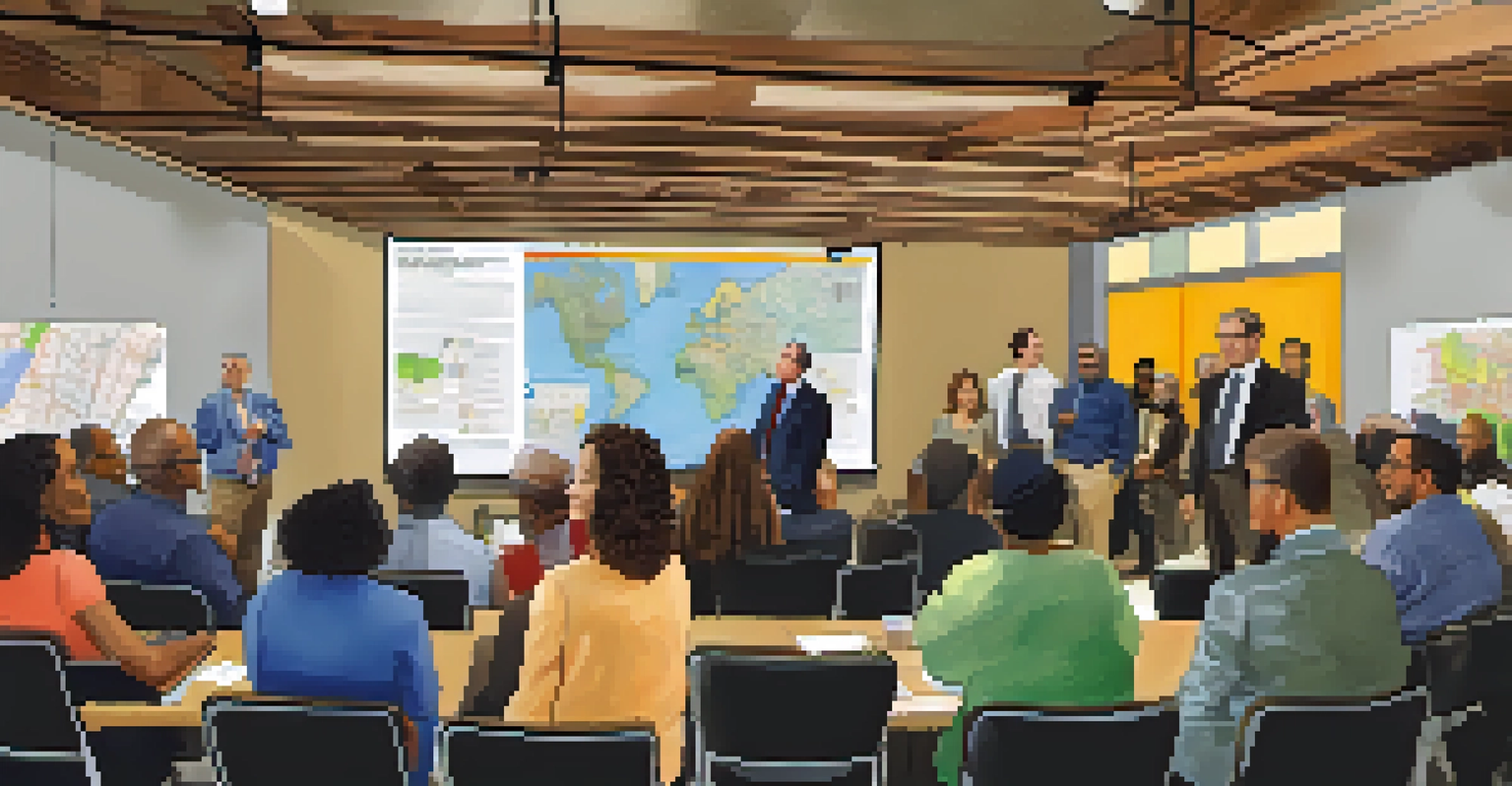The Future of Jersey City's Public Transit: What's in Store?

Understanding Jersey City's Current Public Transit Landscape
Jersey City boasts a diverse public transit system, including buses, light rail, and ferries. This network connects residents to Manhattan and other parts of New Jersey, making commuting easier. However, many commuters often face challenges such as delays, overcrowding, and inconsistent schedules. Understanding these current issues is essential for envisioning future improvements.
Public transportation is the backbone of urban life.
Recent reports indicate that while usage has increased, public satisfaction remains mixed. Commuters have expressed concerns about reliability and accessibility, particularly during peak hours. These factors highlight the need for a robust plan to enhance the overall experience for users. As the city grows, so too does the demand for an efficient transit system that meets the needs of its residents.
The foundation of a successful public transit system lies in its ability to adapt and evolve. By identifying existing challenges, Jersey City can develop innovative solutions that not only improve service but also promote sustainability. It's crucial for city planners and transit authorities to listen to the voices of the community to shape a more user-friendly transit environment.
Investments in Infrastructure: A Game Changer
Infrastructure investment is at the heart of any successful transit overhaul. Jersey City has prioritized funding for upgrades, including new bus lanes and enhanced rail services. Such improvements aim to reduce congestion and streamline transit options for daily commuters. By investing in infrastructure, the city demonstrates its commitment to a more efficient public transport system.

One exciting development is the upgrade of existing light rail stations, which will include modern amenities like real-time arrival information. This feature allows riders to plan their journeys better and reduces the uncertainty that often accompanies public transit. Additionally, expanding these services to underserved neighborhoods can ensure equitable access for all residents.
Investing in Transit Infrastructure
Jersey City is prioritizing infrastructure upgrades to enhance public transit efficiency and accessibility.
Moreover, the integration of bike lanes and pedestrian pathways alongside public transit routes encourages a more holistic approach to urban mobility. By creating a seamless connection between different modes of transport, Jersey City can foster a culture of public transit use. This kind of infrastructure investment not only enhances convenience but also promotes a healthier, more sustainable lifestyle.
Technology's Role in Revolutionizing Public Transit
The integration of technology in public transit is transforming how commuters navigate the city. Jersey City is exploring smart transit solutions like mobile ticketing and location-based services. These innovations allow riders to purchase tickets through their phones, reducing wait times and enhancing convenience. Technology can significantly improve the overall user experience.
The best way to predict the future is to create it.
In addition to ticketing, real-time tracking apps provide users with up-to-the-minute information about bus and train arrivals. This transparency helps alleviate anxiety associated with waiting and encourages more people to rely on public transportation. With the rise of smart city initiatives, Jersey City is positioned to embrace cutting-edge technology that meets the demands of modern commuters.
Furthermore, utilizing data analytics can help transit authorities make informed decisions about service adjustments. By analyzing travel patterns and peak usage times, officials can optimize routes and schedules. This data-driven approach ensures that public transit evolves in sync with the community's needs, ultimately leading to a more reliable system.
Sustainability Initiatives in Public Transit Development
Sustainability is a critical factor in shaping the future of public transit in Jersey City. As the city aims to reduce its carbon footprint, transitioning to electric buses is a significant step forward. These environmentally friendly vehicles not only lower emissions but also provide quieter rides, enhancing the overall commuting experience. Sustainability efforts are necessary for a greener future.
In addition to electric buses, the city is exploring renewable energy sources for powering transit facilities. Implementing solar panels on station rooftops or integrating wind energy can further reduce dependency on fossil fuels. By prioritizing sustainable practices, Jersey City sets an example for other urban areas looking to modernize their transit systems.
Embracing Technology for Transit
The integration of smart technology, such as mobile ticketing and real-time tracking, is revolutionizing the commuting experience in Jersey City.
Community engagement in sustainability initiatives also plays a vital role. By encouraging residents to participate in green transit programs, such as bike-sharing or carpooling, Jersey City can foster a culture of environmental responsibility. This collective effort not only supports public transit but also strengthens community bonds, making everyone a stakeholder in the city's future.
Enhancing Accessibility for All Residents
Accessibility is a cornerstone of an effective public transit system. Jersey City is committed to making its transit options available to all residents, including those with disabilities. This involves ensuring that buses and trains are equipped with features like ramps, auditory announcements, and designated seating. By prioritizing accessibility, the city aims to create an inclusive environment for everyone.
In addition to physical accessibility, providing information in multiple languages is crucial for non-English speaking residents. This can include multilingual signage at transit hubs and translated materials for routes and schedules. Making information accessible ensures that everyone can navigate the system with ease, fostering a sense of belonging within the community.
Furthermore, involving the community in discussions about accessibility can yield valuable insights. By hosting forums and workshops, transit authorities can gather feedback directly from residents. This collaborative approach not only empowers individuals but also helps shape a public transit system that truly serves the diverse needs of Jersey City's population.
The Importance of Community Engagement in Transit Planning
Community engagement is essential for successful transit planning in Jersey City. Involving residents in the decision-making process fosters transparency and builds trust between transit authorities and the public. By hosting open forums and surveys, officials can gather valuable insights about the community's needs and preferences. Such engagement ensures that transit developments align with what residents truly desire.
Moreover, engaging with local businesses and organizations can create partnerships that enhance public transit initiatives. Collaborating with stakeholders helps identify key areas for improvement and generates support for new projects. This collective effort ensures that the transit system not only serves commuters but also promotes local economic growth.
Focusing on Sustainability Initiatives
Jersey City is committed to reducing its carbon footprint by transitioning to electric buses and exploring renewable energy sources.
Ultimately, when residents feel heard and valued, they are more likely to embrace public transit solutions. By prioritizing community engagement, Jersey City can create a public transit system that reflects the values and priorities of its citizens. This collaboration lays the groundwork for a brighter, more connected future for all.
Looking Ahead: The Future Vision for Jersey City's Transit
As Jersey City looks to the future, a comprehensive vision for public transit is taking shape. This vision includes not only technological advancements and infrastructure improvements but also a strong emphasis on sustainability and accessibility. By integrating these elements, the city aims to create a transit system that is efficient, eco-friendly, and welcoming to all residents.
The future of Jersey City's public transit also involves continuous evaluation and adaptation. As new technologies and societal needs emerge, transit authorities must remain flexible to implement necessary changes. This proactive approach ensures that the transit system evolves in tandem with the community it serves, ultimately enhancing the commuting experience.

In conclusion, the future of public transit in Jersey City is filled with possibilities. With ongoing investments, technological advancements, and a commitment to community engagement, the city is poised to transform its transit landscape. By embracing innovation and prioritizing the needs of residents, Jersey City can pave the way for a brighter, more connected future.